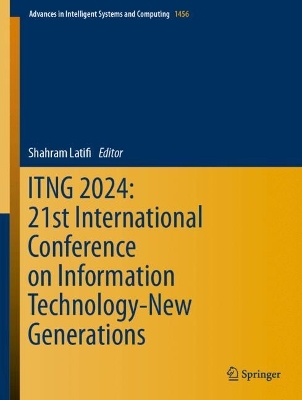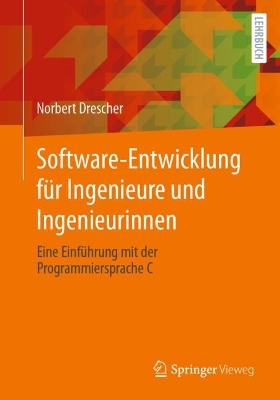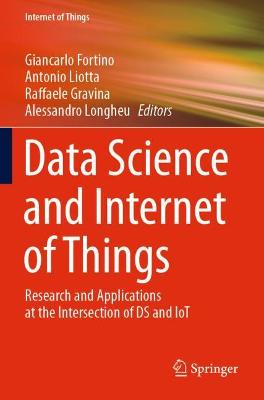ITNG 2024: 21st International Conference on Information Technology-New Generations
 portes grátis
portes grátis
ITNG 2024: 21st International Conference on Information Technology-New Generations
Latifi, Shahram
Springer International Publishing AG
08/2024
536
Dura
9783031565984
Pré-lançamento - envio 15 a 20 dias após a sua edição
Descrição não disponível.
Part I. AI and Robotics.- 1. Projecting Elliott patterns in different degrees of waves for analyzing financial market behavior.- 2. An Integration of Blockchain Web3 and Robotic Process Automation for Property Ownership Traceability.- 3. Early identification of conflicts in the Chilean fisheries and aquaculture sector using text mining and machine learning techniques.- 4. Enhanced AES for Securing Hand Written Signature using Residue Number System.- 5. Using GPT-4 to Tutor Technical Subjects in non-English Languages in Africa.- Part II. Cybersecurity.- 6. A Practical Survey of Data Carving from Non-Functional Android Phones Using Chip-Off Technique.- 7. Automated Semantic Role Mining using Intelligent Role Based Access Control in Globally Distributed Banking Environment.- 8. Software Bill of Materials (SBOM) Approach to IoT Security Vulnerability Assessment.- 9. AI-Assisted Pentesting Using ChatGPT-4.- 10. Combining Cyber Security and Data Science: A Cutting-Edge Approach for Public Health Education Masters.- 11. Integrating Intelligence Paradigms into Cyber Security Curriculum for Advanced Threat Mitigation.- 12. Simulation Tests in Anti-phishing Training.- 13. Where is our data and how is it protected?.- 14. SIV-MAC: an efficient MAC scheme.- 15. Speeding up RSA signature verification.- 16. A Comparative Analysis on Ensemble Learning and Deep Learning Based Intrusion Detection Systems Over the NCC2 Dataset.- 17. Innovative Lightweight Key Agreement Protocol Based on Hyperelliptic Curve for IoT Mutual Authentication.- 18. SECURITY ANALYSIS OF DRONE COMMUNICATION METHODS.- 19. AI and Democracy: A Human Problem.- 20. Comparative study of the Clarity of Privacy Policies in Social Media.- 21. ClipSecure: Addressing Privacy and Security Concerns in Android Clipboard.- 22. Security Vulnerabilities in Facebook Data Breach.- 23. Intelligent Intrusion Detection Model with MapReduce and Deep Learning Model.- 24. Ethical Considerations in the Development and Use of AI WeaponSystems.- 25. Cyber Attack Intensity Prediction Using Feature Selection and Machine Learning Models.- 26. Analysis of IoT Vulnerabilities and Proposed Solution Approach for Secure Real-Time IoT Communication.- 27. Blockchain Based Identity Management For Secure Data Sharing.- Part III. Data Science.- 28. Case Study of an Interdisciplinary Academic Project for Reading Fluency Analysis.- 29. Strategic Software Modernization: Business-IT Convergence with Large Language Model.- 30. Feature Fusion Approach for Emotion Classification in EEG Signals.- 31. Household Discovery with Group Membership Graphs.- 32. Initial Design and Implementation of an Edge-to-Edge LoRaWAN Data Collection System.- 33. A study on data quality and analysis in Business Intelligence.- 34. Exploring the Impact of Augmented Reality Applications on Student Engagement in Higher Education in South Africa: A Review.- Part IV. Human-Computer Interaction.- 35. TickTrax: A Mobile and Web-Based Application for Tick Monitoringand Analysis.- 36. Developing students' reflective skills to improve the learning of Human-Computer Interaction.- 37. Options Matter: Exploring VR Input Fatigue Reduction.- 38. Introductory Pathway to Virtual Reality by Developing Immersive Games of Skill.- 39. A User Study of Two Downstream single-cell Data Analysis Methods: Clustering and Trajectory Inference.- 40. Fostering Joint Innovation: A Global Online Platform for Idea Sharing and Collaboration.- 41. Keep Sailing: An Investigation of Effective Navigation Controls and Subconscious Learning in Simulated Maritime Environment.- Part V. Machine Learning: Theory & Applications.- 42. Offense Severity Prediction Under Partial Knowledge: Trigger Factor Detection Using Machine Learning and Network Science Methods.- 43. Exploring Deep Learning Techniques in the Prediction of Cancer Relapse using an Open Brazilian Tabular Database.- 44. A Review of the Use of Machine Learning for Pharmaceutical Formulations.- 45. A Method for Improving the Recognition Accuracy of Pattern Classification.- 46. An Application of Support Vector Machine, Random Forest, and Related Machine Learning Algorithms on California Wildfire Data.- 47. GPU-accelerated neural networks and computational strategies to predict wave heights.- Part VII. Software Engineering.- 48. A method based on Behavior Driven Development (BDD) and System-Theoretic Process Analysis (STPA) for verifying security requirements in critical software systems.- 49. JSON and XML schemas for WebSTAMP.- 50. Elements-Based Test Suite Reduction for Android Test Suites Generated by Reinforcement Learning.- 51. Towards Adopting a Digital Twin Framework (ISO 23247) for Battery Systems.- 52. Challenges and Success Factors in Large Scale Agile Transformation - A Systematic Literature Review.- 53. Integrating AIaaS into existing systems: the Gokind experience.- 54. A Novel Implementation of FHUQI-Miner, TKQ and FCHM Algorithms for High-Utility Itemset Mining to Predict User Behavior UsingSmartphone Context Events.- 55. Towards systematic and precise compilation of domain-specific modelling languages.- Part VI. Potpourri.- 56. A Detection Method for Circumferential Alignment of Diminutive Lesions Using Wavelet Transform Modulus Maxima and Higher-Order Local Autocorrelation.- 57. Impedance Analysis of Adaptive Distance Relays using Machine Learning.- 58. Employees? experiences of using a mobile health application: A qualitative study based on digital intervention.- 59. MicroSTAMP: microservices for steps 1 and 2 of the System-Theoretic Process Analysis (STPA) technique.- 60. The Disparate Impact of Distinct Background Music on Gameplay Experience: An Empirical Analysis.- 61. Triangulation Guided High Clearance Paths.- 62. Towards Visualizing the Status of Bug Reports.- 63. Quarantine Centrality: Principal Component Analysis of SIS Model Simulation Results to Quantify the Vulnerability of Nodes to Stay Infected in Complex Networks.- 64. A holistic approach for single-cell data trajectory inference using chromosome physical location and ensemble random walk.- 65. Graph partitioning algorithms: a comparative study.- 66. 3D Video Game Simulation Based on Colored Petri net and SIMIO.
Este título pertence ao(s) assunto(s) indicados(s). Para ver outros títulos clique no assunto desejado.
Conference Proceedings;Networking and Wireless Communications;Cybersecurity;Data Mining;Software Engineering;High Performance Computing Architectures;Computer Vision, HCI and Image Processing/Analysis;Signal Processing, UAVs
Part I. AI and Robotics.- 1. Projecting Elliott patterns in different degrees of waves for analyzing financial market behavior.- 2. An Integration of Blockchain Web3 and Robotic Process Automation for Property Ownership Traceability.- 3. Early identification of conflicts in the Chilean fisheries and aquaculture sector using text mining and machine learning techniques.- 4. Enhanced AES for Securing Hand Written Signature using Residue Number System.- 5. Using GPT-4 to Tutor Technical Subjects in non-English Languages in Africa.- Part II. Cybersecurity.- 6. A Practical Survey of Data Carving from Non-Functional Android Phones Using Chip-Off Technique.- 7. Automated Semantic Role Mining using Intelligent Role Based Access Control in Globally Distributed Banking Environment.- 8. Software Bill of Materials (SBOM) Approach to IoT Security Vulnerability Assessment.- 9. AI-Assisted Pentesting Using ChatGPT-4.- 10. Combining Cyber Security and Data Science: A Cutting-Edge Approach for Public Health Education Masters.- 11. Integrating Intelligence Paradigms into Cyber Security Curriculum for Advanced Threat Mitigation.- 12. Simulation Tests in Anti-phishing Training.- 13. Where is our data and how is it protected?.- 14. SIV-MAC: an efficient MAC scheme.- 15. Speeding up RSA signature verification.- 16. A Comparative Analysis on Ensemble Learning and Deep Learning Based Intrusion Detection Systems Over the NCC2 Dataset.- 17. Innovative Lightweight Key Agreement Protocol Based on Hyperelliptic Curve for IoT Mutual Authentication.- 18. SECURITY ANALYSIS OF DRONE COMMUNICATION METHODS.- 19. AI and Democracy: A Human Problem.- 20. Comparative study of the Clarity of Privacy Policies in Social Media.- 21. ClipSecure: Addressing Privacy and Security Concerns in Android Clipboard.- 22. Security Vulnerabilities in Facebook Data Breach.- 23. Intelligent Intrusion Detection Model with MapReduce and Deep Learning Model.- 24. Ethical Considerations in the Development and Use of AI WeaponSystems.- 25. Cyber Attack Intensity Prediction Using Feature Selection and Machine Learning Models.- 26. Analysis of IoT Vulnerabilities and Proposed Solution Approach for Secure Real-Time IoT Communication.- 27. Blockchain Based Identity Management For Secure Data Sharing.- Part III. Data Science.- 28. Case Study of an Interdisciplinary Academic Project for Reading Fluency Analysis.- 29. Strategic Software Modernization: Business-IT Convergence with Large Language Model.- 30. Feature Fusion Approach for Emotion Classification in EEG Signals.- 31. Household Discovery with Group Membership Graphs.- 32. Initial Design and Implementation of an Edge-to-Edge LoRaWAN Data Collection System.- 33. A study on data quality and analysis in Business Intelligence.- 34. Exploring the Impact of Augmented Reality Applications on Student Engagement in Higher Education in South Africa: A Review.- Part IV. Human-Computer Interaction.- 35. TickTrax: A Mobile and Web-Based Application for Tick Monitoringand Analysis.- 36. Developing students' reflective skills to improve the learning of Human-Computer Interaction.- 37. Options Matter: Exploring VR Input Fatigue Reduction.- 38. Introductory Pathway to Virtual Reality by Developing Immersive Games of Skill.- 39. A User Study of Two Downstream single-cell Data Analysis Methods: Clustering and Trajectory Inference.- 40. Fostering Joint Innovation: A Global Online Platform for Idea Sharing and Collaboration.- 41. Keep Sailing: An Investigation of Effective Navigation Controls and Subconscious Learning in Simulated Maritime Environment.- Part V. Machine Learning: Theory & Applications.- 42. Offense Severity Prediction Under Partial Knowledge: Trigger Factor Detection Using Machine Learning and Network Science Methods.- 43. Exploring Deep Learning Techniques in the Prediction of Cancer Relapse using an Open Brazilian Tabular Database.- 44. A Review of the Use of Machine Learning for Pharmaceutical Formulations.- 45. A Method for Improving the Recognition Accuracy of Pattern Classification.- 46. An Application of Support Vector Machine, Random Forest, and Related Machine Learning Algorithms on California Wildfire Data.- 47. GPU-accelerated neural networks and computational strategies to predict wave heights.- Part VII. Software Engineering.- 48. A method based on Behavior Driven Development (BDD) and System-Theoretic Process Analysis (STPA) for verifying security requirements in critical software systems.- 49. JSON and XML schemas for WebSTAMP.- 50. Elements-Based Test Suite Reduction for Android Test Suites Generated by Reinforcement Learning.- 51. Towards Adopting a Digital Twin Framework (ISO 23247) for Battery Systems.- 52. Challenges and Success Factors in Large Scale Agile Transformation - A Systematic Literature Review.- 53. Integrating AIaaS into existing systems: the Gokind experience.- 54. A Novel Implementation of FHUQI-Miner, TKQ and FCHM Algorithms for High-Utility Itemset Mining to Predict User Behavior UsingSmartphone Context Events.- 55. Towards systematic and precise compilation of domain-specific modelling languages.- Part VI. Potpourri.- 56. A Detection Method for Circumferential Alignment of Diminutive Lesions Using Wavelet Transform Modulus Maxima and Higher-Order Local Autocorrelation.- 57. Impedance Analysis of Adaptive Distance Relays using Machine Learning.- 58. Employees? experiences of using a mobile health application: A qualitative study based on digital intervention.- 59. MicroSTAMP: microservices for steps 1 and 2 of the System-Theoretic Process Analysis (STPA) technique.- 60. The Disparate Impact of Distinct Background Music on Gameplay Experience: An Empirical Analysis.- 61. Triangulation Guided High Clearance Paths.- 62. Towards Visualizing the Status of Bug Reports.- 63. Quarantine Centrality: Principal Component Analysis of SIS Model Simulation Results to Quantify the Vulnerability of Nodes to Stay Infected in Complex Networks.- 64. A holistic approach for single-cell data trajectory inference using chromosome physical location and ensemble random walk.- 65. Graph partitioning algorithms: a comparative study.- 66. 3D Video Game Simulation Based on Colored Petri net and SIMIO.
Este título pertence ao(s) assunto(s) indicados(s). Para ver outros títulos clique no assunto desejado.







